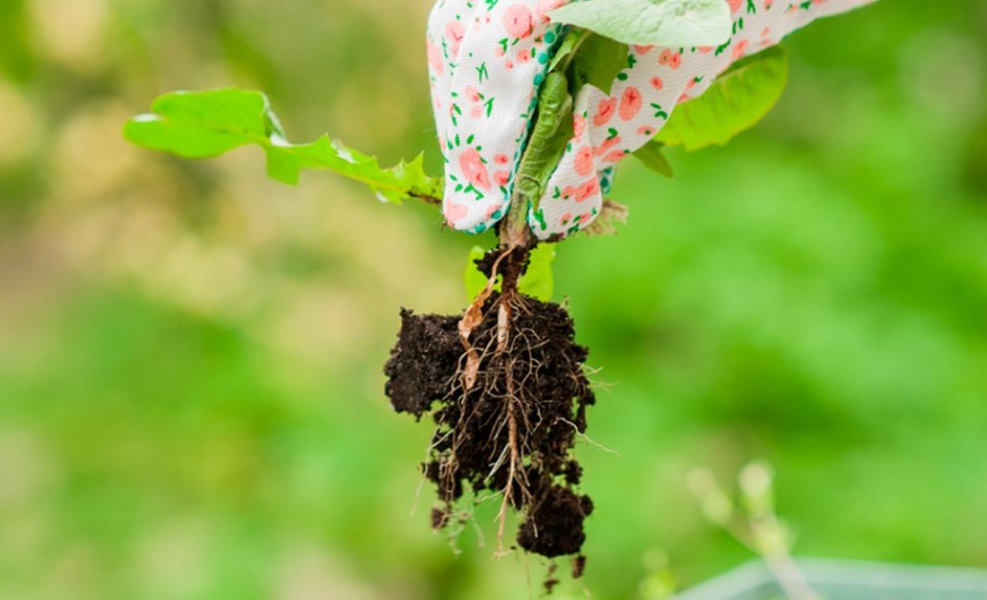
Weed control in the garden is a laborious, but at the same time, a necessary process. Gardeners have to spend a lot of time and energy so that vegetables and fruits in the beds are not endangered. Weeds are sources of plant diseases and places of possible accumulation of harmful insects: aphids, caterpillars, bugs. Destruction of weed grass in the garden and vegetable garden helps to preserve the crop, to prevent infection of cultivated plants with fungal diseases. Harmful insects that live in thickets of weeds will not move to garden plants.
Content
Dangerous neighborhood
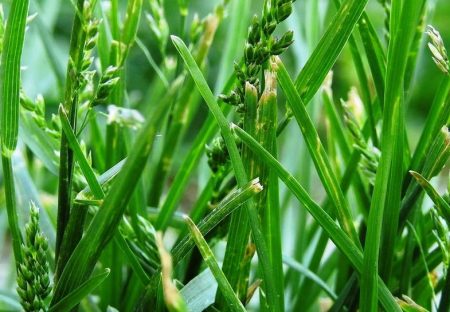
In a garden overgrown with dense weeds, fruit crops are at risk. You do not have to wait for crops on such beds, and here's why:
- weeds are more viable than cultivated plants, resistant to adverse climatic conditions;
- in the struggle for food, living space, light and water, weed grass is stronger than garden plants;
- weeds absorb part of the nutrients and moisture necessary for the growth and development of vegetables, berries, fruits;
- not getting enough nutrition, cultures weaken and become easy prey for harmful insects;
- spores of fungal diseases from weeds growing near the beds are carried by insects or wind to healthy cultivated land.
Dangerous and harmful weeds are considered: nettle, hogweed, sow thistle, wheat grass and wood louse. The fight against them is ongoing, they destroy, giving no chance for propagation by seeds or root offspring.
Methods of struggle
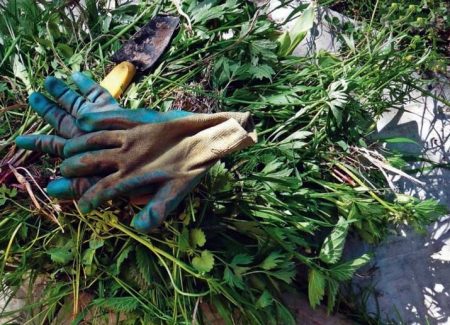
Fight weed in the garden and in the garden is necessary throughout the growing season of fruits and vegetables. It is difficult to get rid of perennial weeds, it is a long and laborious job. Gardeners give her a lot of time, but their hard work pays off. Vegetable productivity increases due to the absence of pests and diseases. Improving the aesthetic appearance of gardens and kitchen gardens. Weed-free beds and paths are pleasing to the eye. It is possible to achieve this state of summer cottages by using all kinds of methods to combat “unnecessary” vegetation.
Weeding
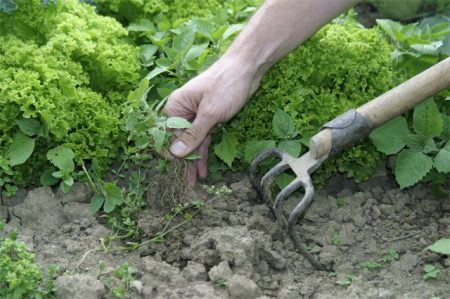
For weed control in the garden, weeding of beds manually has long been used, the simplest tools were used for this: a hoe, an okuchnik, a cultivator, a fork for removing roots:
- hoe - a pointed metal triangle, mounted on the end of the handle from a length of 1.5 m, serves to destroy weeds up to 10-15 cm in depth, to loosen the soil and collect land around the plant, a hoe is used when working in large areas (potato plantations, cabbage, beets and other crops);
- okuchnik - a hand tool similar to a hoe, but with a short handle (30 cm) for the convenience of weeding and hilling of small beds;
- cultivator - bent trident forks or forks, cuttings 30 cm and 1.5 m long, the size depends on the position of the person: standing or leaning over the bed;
- fork for removing perennial roots - a device with 2 teeth is fixed on the handle, the undermined root of the weed is pierced with a fork, slightly lifted and with effort is pulled out of the ground.
Weed roots must be removed carefully, taking care not to leave parts in the ground that after a while will sprout again in the same place.
The introduction of mechanized tools in horticulture has reduced the complexity of manual labor.Machines came to the fight: trimmers, walk-behind tractors, cultivators that help fight weeds in large land areas of farms.
Pesticides
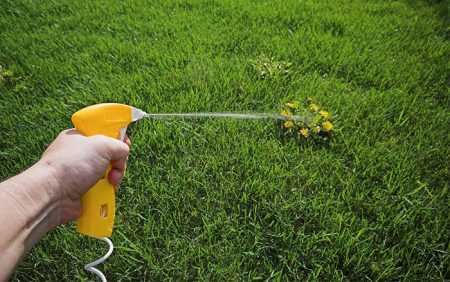
Manual weeding is not as effective as pesticides. Perennial weeds cannot be removed unless chemicals are used. Apply chemical and biological agents (herbicides) before planting seedlings or sowing seeds of vegetables, when the first weed shoots appear. General-purpose preparations are used in the fall after harvest.
| The name of the drug | Characteristic | Application |
| Butizan | Destroys weed root system | The beds are processed after planting seeds of cabbage crops and root crops |
| Treflan | It has a detrimental effect on annual cereal weeds and dicotyledons: Veronica, oats and woodlice | Close up to the ground 10-15 cm before planting seedlings of cabbage, tomatoes, peppers |
| Zencor | Gets on leaves and weed roots during germination | Plantings of potatoes and other crops are sprayed before germination and after the appearance of the first sprouts, 5-10 cm high |
| Prometrine | It penetrates the leaves and stems of weeds, reaches the roots, kills the plant | It begins to act on the second day after germination of weed, protects the crops of vegetables for a long time |
| Roundup | Affects weeds during active growth | Potato and grape plantings are sprayed in July or early August. |
| Tornado | Destroys even the most “tenacious” weeds: wheatgrass, bindweed, buther | Used for autumn tillage in the garden |
| Gezagard | Kills weeds in any growing season, protects beds for a long time | Conduct processing at any convenient time |
It is necessary to use personal protective equipment when working with pesticides: gloves, overalls and glasses. Prepare solutions strictly following the Instructions, observe the dosage, and avoid exceeding the concentration of solutions.
Using mulching materials
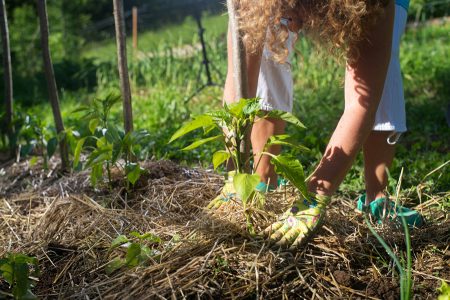
The use of mulch helps to deal with weeds in the garden. Mulch is the material that covers the surface of the soil to restrain the germination of weed grass and preserve moisture. Gardeners use as mulch:
- shredded bark of coniferous trees: larch, pine;
- dry mowed grass (without weeds);
- fine peat from lowlands;
- fallen needles (short-lived material);
- dried sawdust of deciduous trees;
- dry or rotted foliage;
- straw of threshed cereal crops;
- wood chips;
- spruce or pine cones.
Spread the mulching material on the beds after manually removing weeds and loosening the soil. The height of the mulch layer is determined depending on the crop grown, the average value for many plants is 5-10 cm.
The material for mulching must be clean, that is, not contain weed seeds and not be affected by fungi. Try to use the correct mulch and disinfect it with a chemical solution or fry before laying on the beds, just in case.
Folk remedies and methods
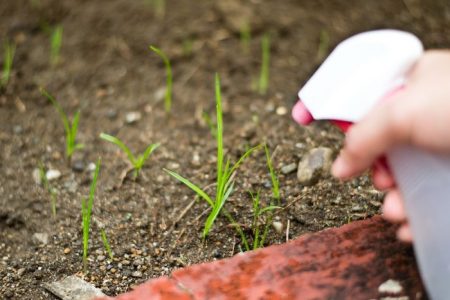
Gardeners who do not accept the use of pesticides on land try to apply folk methods to get rid of weeds. Along with the old, proven methods, gardeners invent new, gentle methods that do not violate the ecology of the garden.
According to folk methods, it is recommended:
- Use alcohol. Prepare a 1:10 concentration solution, one part of alcohol per 10 parts of water (example: 0.5 liters of 70% alcohol per 5 liters of water). Before planting, spill the beds with this composition. Weeds will not germinate until the end of the season.
- Apply a solution of soap, salt and vinegar.Dissolve and mix in a ten-liter bucket of water: vinegar 9% - 3.8 l, salt - half a glass, grated or liquid soap - 50 g. Processing should be done carefully, drops of the solution should not fall on the leaves of seedlings. Use a manual spray gun.
- To process weeds with solutions: soda 250 g + bucket of water; 5 liters of vinegar (5%) + a glass of salt + 10 liters of water.
- Invite live helpers. Hens, geese and ducks are excellent weed killers. In the fall, after harvesting, animals are released into the garden, birds will destroy unnecessary grass, and even roots will be taken out.
Gardeners sometimes use blowtorches to control weeds. Doing this is not recommended because of the danger of fires. Use this method in exceptional cases, observing safety rules.
Modern ways
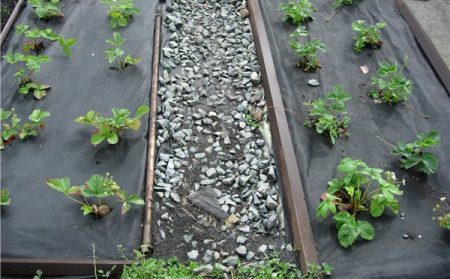
Weed control in a modern way involves the use of modern, non-existing materials for this purpose: black PVC film, geotextile sheets, gravel, gravel. There are downsides to the use of such materials, but there are undoubtedly advantages as well:
- black PVC film does not transmit light, inhibits the growth and development of weeds;
- textile canvases inhibit the root system of weeds, prevent weeds from growing on the beds;
- gravel and crushed stone protect garden paths and the space between plantings on flower beds from weeds.
Gardeners use film and textile on beds as follows:
- prepared beds are completely covered with protective material;
- make cuts in places of future planting of seedlings;
- plants are planted, sections of mulch are fixed, retreating from the main stem by 5-10 cm;
- seedlings are watered and fed using a drip irrigation system.
The efficiency of using modern materials is high, but their use can disrupt the microflora and the ecological balance of the soil. Earthworms and other beneficial insects that live in the earth die. The formation of nutrients in the earth is disturbed due to a lack of sunlight.
Alternative techniques
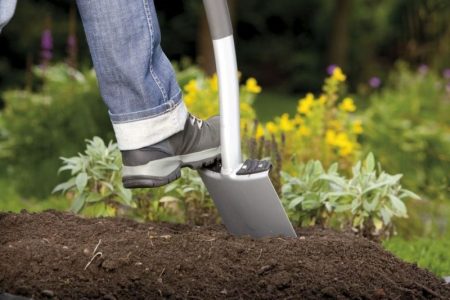
There are ways to control weeds that are opposite to the methods described above, they require a lot of labor and minimal knowledge of agricultural techniques for growing fruits and vegetables.
- It is necessary to dig a garden in the fall and in the spring every year. Autumn digging without breaking large clods of earth improves the structure of heavy soils. Under the influence of frost, lumps crumble, the earth becomes loose, and the roots of weeds raised to the surface freeze.
- Draw a scheme of crop rotation and crop rotation in the garden, as accurately as possible to observe the replacement of plantings of one crop by another. Gardeners note that the same species of weeds grow among certain cultivated plants, if one vegetable crop is replaced by another (potatoes for tomatoes, cucumbers for carrots), then there are less weeds in such areas.
- Do not leave empty areas in the garden that will quickly occupy the weeds. You have harvested early radishes, the garden has become free, but you did not manage to plant anything else on it. After 2-3 days, a fresh shoot of weed grass will settle on the bed.
It is necessary to treat the vacant beds with herbicides on the day of harvest, and not later than after 5-7 days to sow new crops (greens, herbs, and others).
Conclusion
Keeping the garden clean is a difficult task, but even lazy gardeners, applying a minimum of labor, but a maximum of ingenuity, cope well with the problem. Use the complex of measures described above in the fight against weeds, and the result will delight you. Good luck.

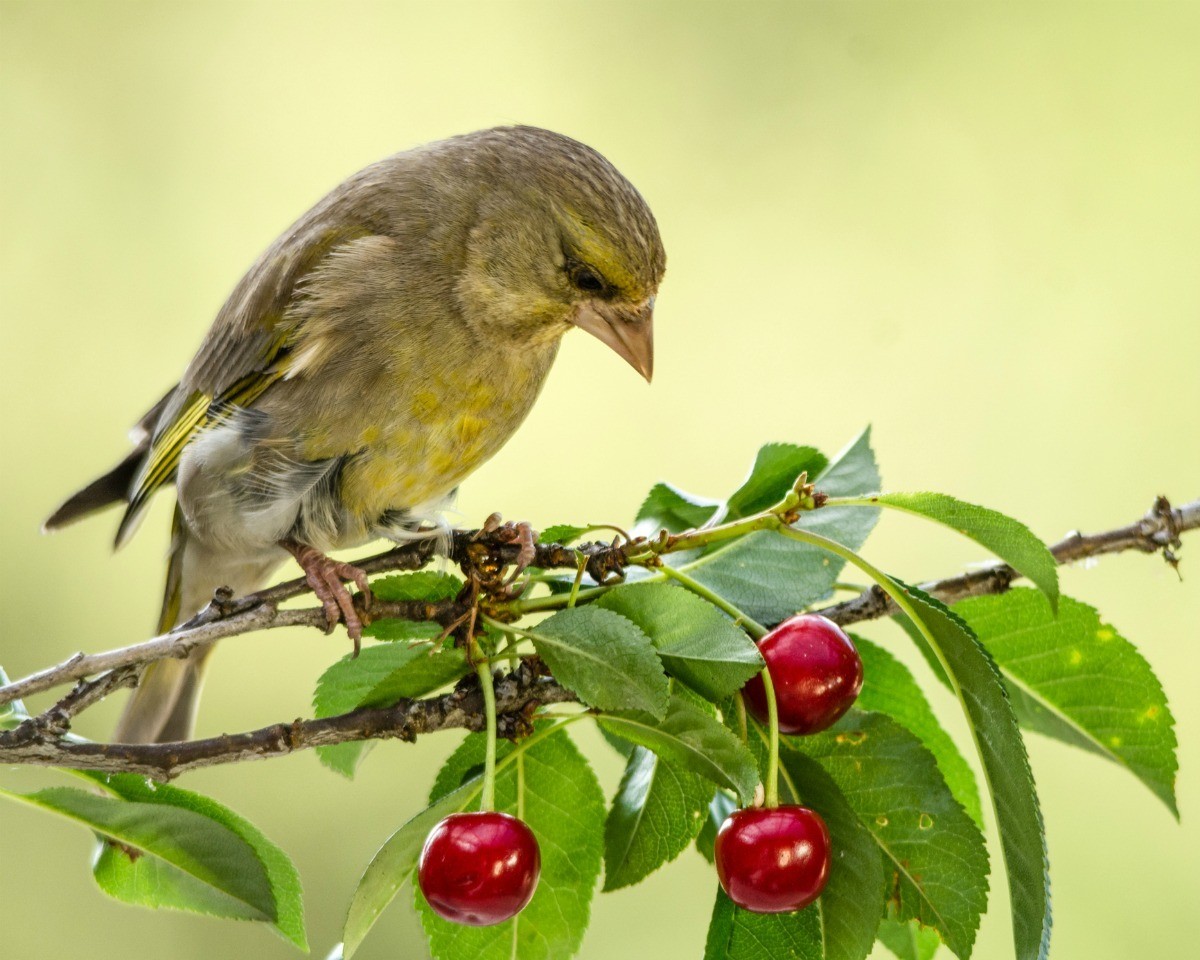
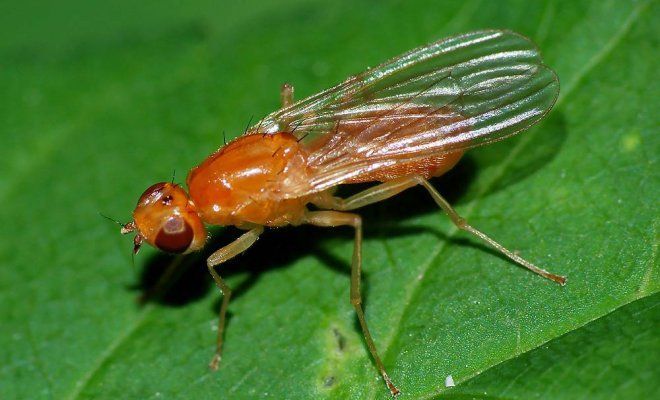
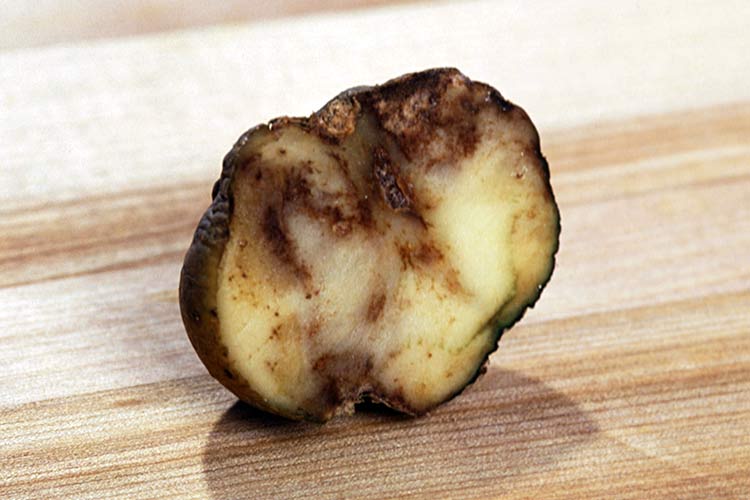
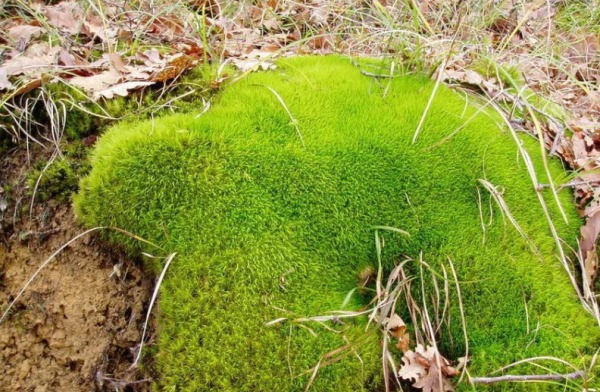 Where does moss come from in the garden and is it necessary to get rid of it?
Where does moss come from in the garden and is it necessary to get rid of it?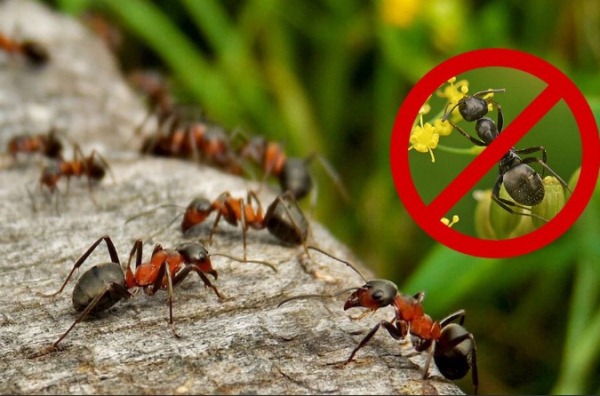 The most effective ways to deal with ants in the area
The most effective ways to deal with ants in the area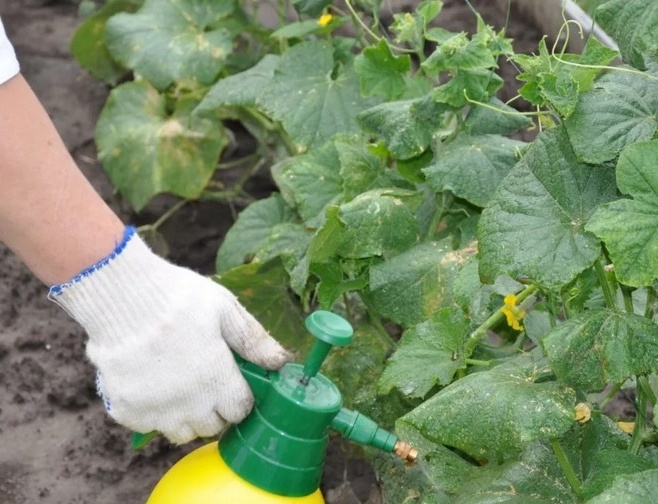 Cockchafer and Bear: An Easy Way to Save Plant Roots
Cockchafer and Bear: An Easy Way to Save Plant Roots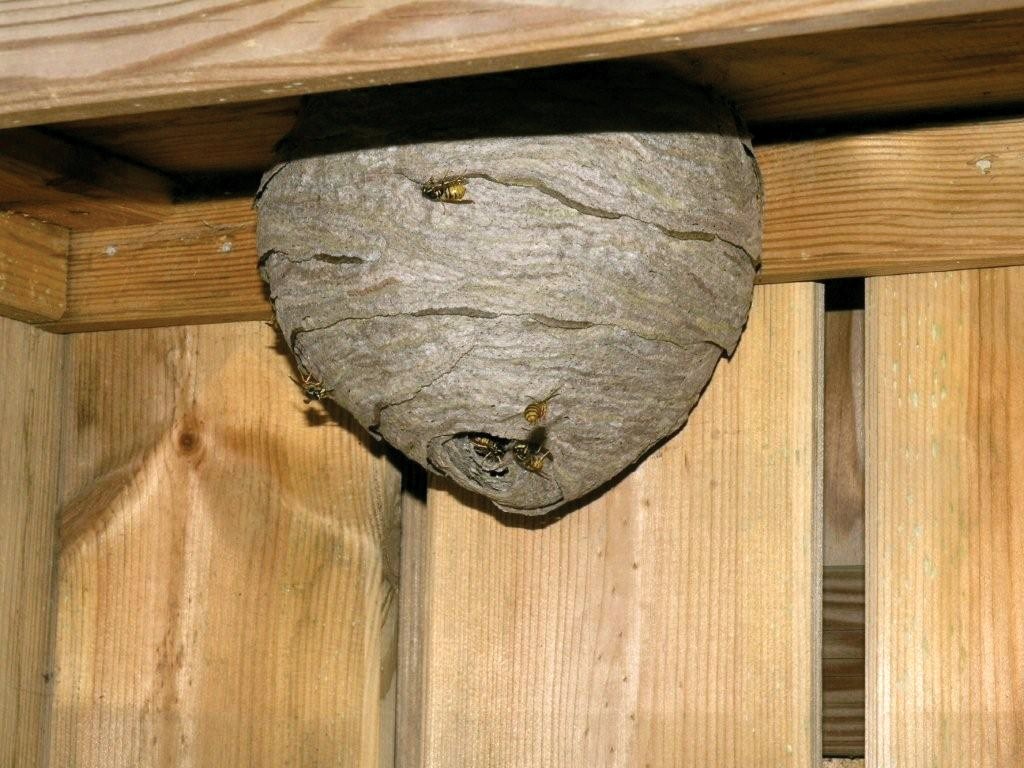 Get rid of the aspen nest quickly and safely.
Get rid of the aspen nest quickly and safely.